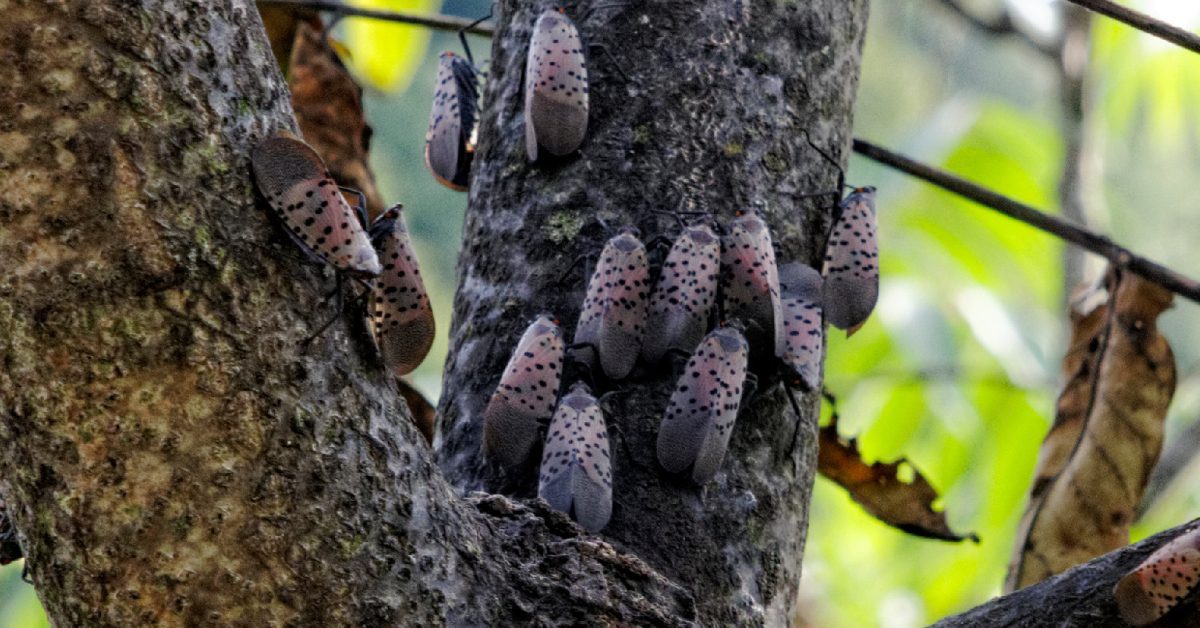Should You Kill Spotted Lanternflies?
Helping out your local environment doesn’t typically involve killing the wildlife. However, to stop the spread of invasive species, sometimes there’s no gentle way to deal with the problem.
The spotted lanternfly is one of North America’s most worrisome invasive species to emerge in recent years. Expert advice to citizens is clear: seek out and destroy.
What Is a Spotted Lanternfly?
The spotted lanternfly (Lycorma delicatula) is a colorful planthopper insect native to parts of China and India. Insects in the planthopper group have broad, flat wings. They move slowly but travel skillfully through airborne leaps (think of grasshoppers).
A spotted lanternfly is a colorful and rather beautiful bug. It’s about one inch long and a half-inch wide at rest with a wingspan of about two inches. The forewings (the ones closer to the head) are gray with black spots. The hind wings have patches of red, black, and white. The abdomen is yellow and black.
Spotted lanternfly nymphs hatch from their egg cases in April and May. Nymphs spend their time hopping and crawling from plant to plant for feeding. Mating and egg-laying occur between July and September. Females lay masses of 30-50 eggs at a time.
Harm Caused by Invasive Spotted Lanternflies
Not every non-native plant or animal in a given area is harmful or considered invasive. However, sometimes a species is introduced to a new territory and finds it an effortless place to thrive. Its regular predators and other limiting factors are absent, and food and habitat are abundant. As the invasive species enjoy easy living, native species are outcompeted or preyed upon.
The spotted lanternfly is invasive because it kills trees and other plants. They feed on the sap from a wide range of trees and plants, puncturing bark and stems, thus weakening and eventually killing the host. Spotted lanternflies also excrete a “honeydew” substance that leads to mold growth, causing additional stress on trees and plants.
Because these bugs survive so well in parts of North America, their numbers can quickly swell. Thus, the threat posed to wild and agricultural trees is enormous.

How to Help Stop the Spread of Spotted Lanterflies
The spotted lanternfly has established populations in Pennsylvania, New Jersey, Connecticut, Massachusetts, Maryland, New York, Delaware, Ohio, Virginia, West Virginia, and Indiana. Several states have issued quarantine orders. Because they’re happy to lay an abundance of eggs on any flat surface, spotted lanternflies are easily (and usually accidentally) transported from place to place. And they are spreading quickly to all parts of New Jersey and other states.
Local governments, wildlife protection agencies, and agricultural operators are all fighting the spread of the spotted lanternfly. However, we can all do our part. It’s simple: if you see one of these invaders… squash it. If you find a spotted lanternfly where it’s not yet known to exist, you should report it to your local natural resources agency. If you live where they’ve already taken hold, you should simply kill them as you see them.
Spotted lanternflies do not bite or harm humans, so you can safely stomp, swat, and crush them. If they’re causing a problem on your property, consult with your local government and pest-control experts for recommended steps.
Killing any animal, even an insect, is unpleasant and not a matter to take lightly. However, it’s the right thing to do regarding the spotted lanternfly. Stomp a spotted lanternfly today to protect local wildlife and agriculture. Another way to kill them is by spraying vinegar directly on them.
Get Additional Help
If you are experiencing pest or wildlife issues, please contact NJ Pest Control. We are ready to service you and give you peace of mind.

